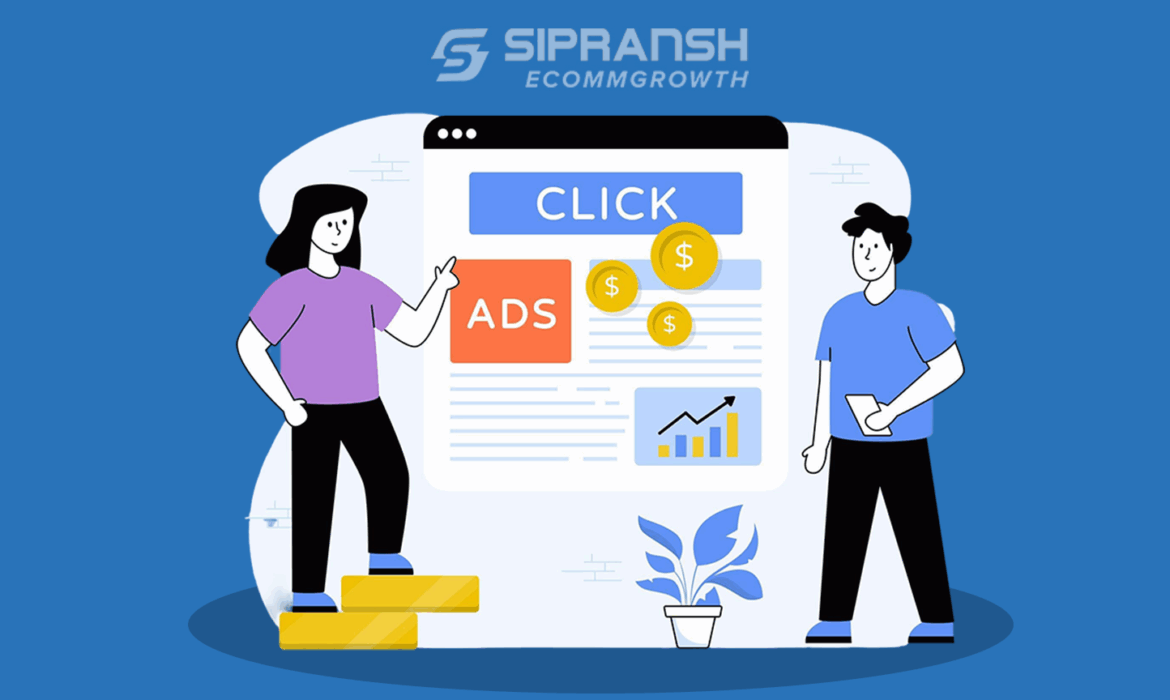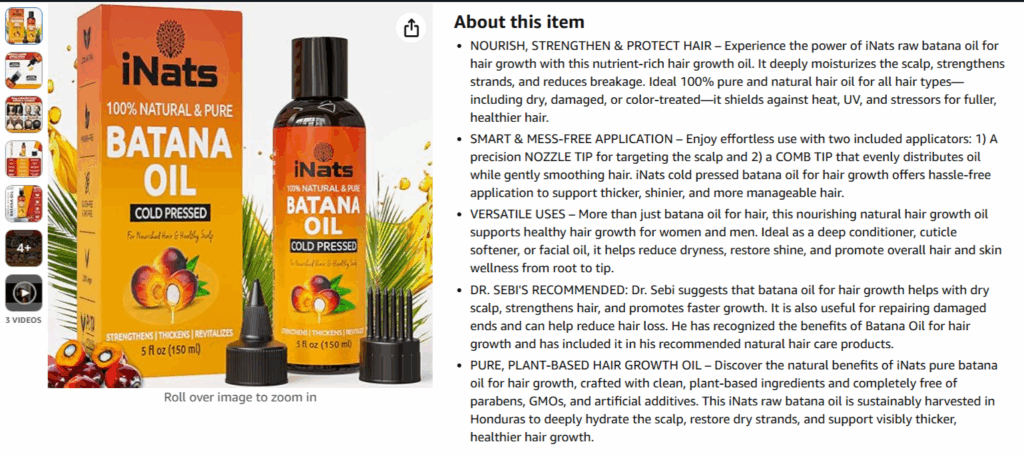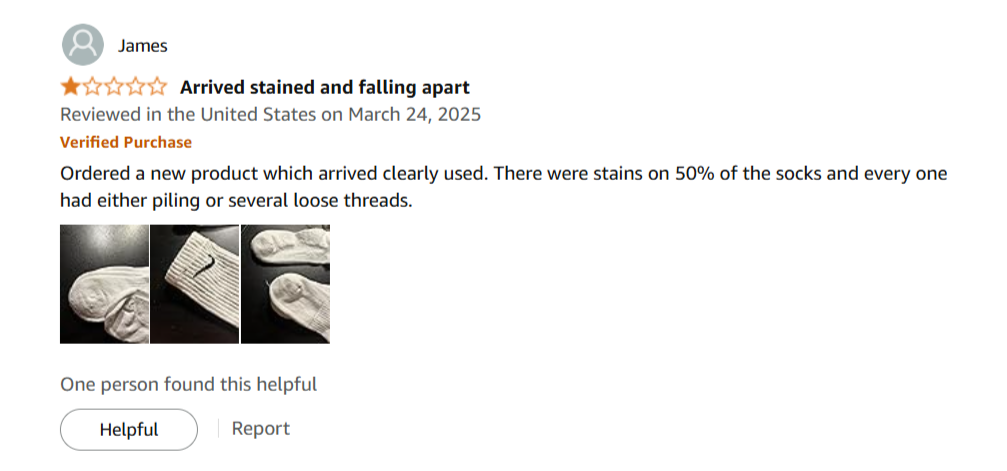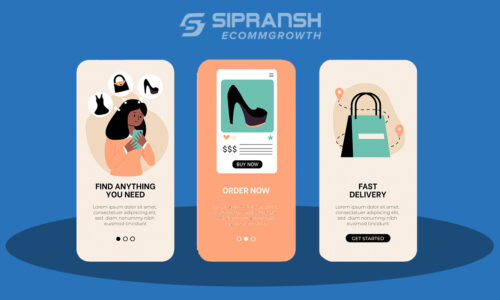
Running Amazon ads but not seeing sales roll in? You’re getting clicks and spending money, yet conversions remain low. It’s frustrating, especially when your ROI is taking a hit. The upside? There’s a way to fix it.
If your ads aren’t converting, something’s misaligned. It could be your targeting, listing content, pricing, or the way your ads are written. In this guide from SIPRANSH ECOMMGROWTH, we’ll uncover the top reasons Amazon ads miss the mark and show you how to course-correct, so your traffic finally turns into revenue.
1. Poor Product Listing Optimization
If your Amazon ads are getting clicks but not converting into sales, chances are your product listing is the issue. Even a well-targeted PPC campaign won’t deliver results if the listing fails to persuade shoppers to purchase.

Optimizing Your Product Listing
Start by reviewing your Amazon two-part titles—they need to be clear, packed with relevant keywords, and easy for customers to understand. Avoid overloading it with keywords just for ranking; prioritize clarity and customer relevance.
Next, focus on your bullet points and product description. Highlight the benefits, not just the features. For example, rather than stating “Made from stainless steel,” try “Durable, rust-resistant stainless steel built to last.”
Your product images play a huge role. Poor-quality visuals can quickly drive customers away. Make sure to include:
- High-quality photos – Clear, sharp images with good lighting.
- Amazon Infographic images – Visually explain key benefits and features.
- Lifestyle photos – Show your product in action to build a connection.
- Product videos – A short demonstration video can greatly increase buyer trust.
Lastly, don’t underestimate the impact of A+ Content. It enhances your listing’s visual appeal and improves engagement. Without strong optimization, your ad spend is being wasted. Get your listing right first, then scale your campaigns.
2. Weak or Irrelevant Keyword Targeting
If your Amazon ads are pulling in the wrong crowd—or worse, not reaching anyone—your keyword targeting could be off. Sellers often make the mistake of going too broad, which brings irrelevant traffic, or too narrow, which limits exposure and sales opportunities.
Fixing Your Keyword Targeting
Begin by reviewing your search term report. Are your clicks coming from unrelated queries? If so, it’s time to rethink your keyword approach.
Incorporate a blend of match types:
- Broad match helps uncover new keyword opportunities.
- Phrase match ensures some relevance.
- Exact match offers the most precision and control.
Don’t ignore long-tail keywords—they attract more qualified buyers. Instead of targeting “running shoes,” use “women’s size 8 lightweight running shoes.”
When reviewing your campaigns, consider including Amazon generic keywords, for example, terms like “best seller,” “top rated,” or “official store,” which can drive high-volume traffic but require precise placement to avoid wasted spend. (Amazon generic keywords example: Using “natural supplement” instead of a branded term.)
Study competitor listings to identify high-performing keywords for which they’re ranking.
Use automatic campaigns to discover potential keywords, then transfer the best-performing ones to manual campaigns for tighter control.
If you’re seeing clicks but no purchases, your keywords might not reflect what buyers actually want. For example, someone searching for “affordable yoga mat” likely won’t convert on a high-end option. Match your targeting to shopper intent.
Misaligned keywords waste your budget. Dial in the right ones, and your conversions will improve without needing to increase your ad spend.
3. Uncompetitive Pricing Compared to Competitors
If your product is priced higher than similar items, shoppers may click your ad, see the cost, and quickly move on. On Amazon, buyers compare prices in seconds—if yours doesn’t look like a good deal, you’ll lose the sale.
Evaluate Your Pricing Strategy
Before you spend on ads, take a close look at your competition:
- Review the Buy Box price – Are you noticeably more expensive?
- Check for active promotions – Are competitors using coupons or limited-time offers?
- Assess the overall value – If your product is premium, does the listing communicate why it’s worth more?
- Keep an eye on price trends – Amazon pricing shifts often, so stay updated and adjust as needed.
If matching lower prices isn’t feasible, focus on adding value. Emphasize benefits like enhanced features, better materials, added accessories, or excellent customer support. A premium item should look and feel premium in both content and branding.
You can also use tools like Amazon Coupons or Lightning Deals to attract buyers without slashing your base price. Even a small discount can improve conversions. If clicks aren’t turning into sales, your pricing might be the issue—adjust wisely to stay competitive.
4. Poor Ad Placement and Bidding Strategy
If your ads aren’t appearing in spots that drive high conversions, your PPC strategy may be falling short. Amazon prioritizes placements like top-of-search, product detail pages, and rest-of-search. Without the right bidding approach, you risk low visibility and weak performance.
Understand Key Placements:
- Top-of-search – Offers maximum exposure and strong conversion potential, but comes with higher costs.
- Product detail pages – Ideal for capturing interest from competitor traffic and boosting brand recognition.
- Rest-of-search – More budget-friendly, but typically sees lower conversion rates.
Your bidding method is just as important. With fixed bids, you might miss out on valuable traffic. If you’re using dynamic bidding (up and down) too aggressively, you could end up overspending on clicks.
Check your placement reports to see where your ads are showing and how they’re performing. If you see better results from top-of-search, increase your bid adjustments for that placement to enhance visibility and drive more conversions.
A smart bidding and placement strategy can help reduce ACoS while improving sales, without needing to boost your ad spend. If you’re not confident in managing this yourself, consider partnering with an Amazon PPC expert to optimize your campaigns for better returns.
5. Negative Reviews and Low Ratings
When a product has poor reviews or a low overall rating, even the best PPC campaign won’t improve conversions. Customers rely heavily on feedback from others, and a listing filled with negative experiences drives them toward your competitors.

- First, take a look at your average star rating—if it falls below 4 stars, it’s likely that while people are clicking your ads, they’re choosing not to buy.
- Dig into the reviews to spot recurring issues. Are buyers disappointed with the quality, sizing, or packaging? Addressing these concerns can help prevent future negative feedback.
- Always respond to negative reviews respectfully and helpfully. This builds trust and shows that you value your customers’ input.
- Focus on increasing positive feedback. Use Amazon’s built-in “Request a Review” feature or send compliant follow-up emails to encourage satisfied buyers to share their experiences.
If rival products have higher ratings, customers are more likely to go with them. Improve your offer by enhancing product quality, upgrading the packaging, or including a thoughtful bonus item to boost customer satisfaction.
Before investing more in ads, resolve any product quality or customer experience issues. A well-reviewed product with a strong rating will convert significantly better, meaning you get more from every advertising dollar. Ads attract visitors, but reviews are what seal the deal.
6. Weak Product Differentiation in a Saturated Market
If your product blends in with dozens of similar listings, it’s hard to convince shoppers to buy, no matter how much you spend on ads. In highly competitive categories, standing out is essential for converting clicks into sales.
- Start by digging into competitor reviews. Identify what customers praise or complain about, and use that insight to improve your offer.
- Clearly communicate what sets your product apart. Do you use more durable materials, include bonus items, or offer a satisfaction guarantee? Make sure those points are front and center in your listing.
- Upgrade your packaging if possible—a memorable unboxing experience can make a lasting impression and boost perceived value.
- Use tools like Amazon A+ Content and product videos to visually communicate your advantages. A polished visual presentation can make your listing more engaging and credible.
If your item is nearly identical to lower-priced competitors, most buyers will choose the cheaper option. But if you can’t win on price, win on value—deliver a better overall customer experience, longer-lasting product, or an exclusive bundle.
Before scaling up your ad campaigns, ensure your product gives shoppers a compelling reason to choose you. Not sure where to start? Consulting with Amazon business experts can help you identify strong differentiators and refine your positioning to increase conversions.
7. Targeting the Wrong Audience
If your ads target the wrong group, clicks won’t turn into sales—they’ll only eat up your budget. Ineffective targeting means your ads show to people unlikely to purchase your product.
Here’s how to improve:
- Analyze search term reports – Are your ads appearing for irrelevant or unrelated searches?
- Choose appropriate match types – Broad match can attract low-quality traffic; phrase and exact match help focus your targeting.
- Refine audience targeting in Sponsored Display – Avoid spending on audiences who aren’t likely to convert.
- Use negative keywords – Block search terms that draw uninterested shoppers to your ads.
For example, if you sell high-end leather wallets but your ads trigger for “cheap wallets,” you’ll attract bargain hunters unlikely to buy. Likewise, selling women’s fitness gear and targeting broad terms like “gym equipment” could waste budget on unqualified clicks.
The solution? Sharpen your keywords, match types, and audience segments so you only pay for clicks from buyers ready to purchase. Better targeting means more conversions and less wasted ad spend.
8. Slow or Expensive Shipping Options
Amazon customers expect quick and low-cost delivery—if your shipping is slow or pricey, potential buyers may click your ad but leave without purchasing. Even the best ads won’t convert if shoppers aren’t happy with the delivery options.
Here’s how to fix it:
- Review your shipping speed – Are your delivery estimates slower than your competitors? Faster shipping often wins the sale.
- Use Fulfillment by Amazon (FBA) – FBA listings get the Prime badge and benefit from Amazon’s trusted, fast shipping network.
- Improve FBM shipping – If you fulfill orders yourself, consider partnering with more efficient carriers to speed up delivery.
- Include free shipping – Even if you build the cost into your product price, the word “free” influences buyer behavior.
- Prioritize Prime eligibility – Prime members are more likely to choose products with fast, free shipping. Without the Prime badge, your listing may be overlooked.
If you rely on FBM, streamline your logistics and fulfillment to compete with Prime offerings. Today’s Amazon shoppers won’t wait a week when they can get a similar item delivered in two days.
9. Not Using Retargeting Strategies Effectively
Many sellers concentrate solely on attracting new visitors but overlook the power of retargeting shoppers who have already shown interest. Retargeting is essential to recover lost sales by reminding potential buyers about your product after they leave your listing.
Here’s how to leverage retargeting effectively:
- Use Sponsored Display Retargeting – Serve ads to shoppers who viewed your product but didn’t complete a purchase.
- Target competitor audiences – Reach people who explored similar items but haven’t bought yet.
- Utilize Amazon DSP for advanced retargeting – Engage shoppers both on Amazon and across external websites.
- Adjust bids based on shopper behavior – Increase bids for high-intent users who added products to their cart but abandoned checkout.
Since many buyers browse several products before deciding, timely reminders through retargeting ads can bring them back and boost sales.
Neglecting retargeting means missing out on valuable customers and handing opportunities to competitors. A strong retargeting plan improves conversions, lowers ACoS, and maximizes your ad budget’s effectiveness—make sure it’s part of your PPC strategy.
10. Running Ads for a Product with Low Demand
No amount of advertising budget can create steady sales if your product simply isn’t in demand. Investing in Amazon PPC Services for an item that few people search for will only lead to wasted spend and frustration.
Here are key steps to evaluate demand before scaling ads:
- Check search volume – Use keyword research tools to determine if shoppers are actively looking for your product.
- Analyze market trends – Is your product seasonal or part of a declining trend?
- Review competitor sales data – Low sales for similar products may indicate weak demand.
- Test demand on a small scale – Launch limited campaigns and monitor if organic interest increases before boosting your ad spend.
If your product serves a very niche market or shows limited demand, consider improving your positioning, bundling with complementary items, or exploring alternative products. Often, low sales stem from product-market fit rather than ad strategy.
Don’t just raise bids blindly — confirm that demand exists first. Otherwise, you risk continuously wasting budget on a product without enough buyers. Conducting thorough market research is essential to ensure your PPC investment pays off.
11. Ineffective Ad Copy
If your ad copy fails to catch attention or persuade shoppers, your PPC clicks won’t turn into sales. Amazon SEO Service isn’t just about cramming keywords—it requires crafting compelling copy that motivates buyers.

Here’s how to improve your ad copy:
- Use clear, benefit-focused language – Explain why your product stands out, not just what it is.
- Incorporate keywords naturally – Avoid awkward keyword stuffing; ensure the copy reads smoothly.
- Emphasize unique selling points – Highlight features that differentiate your product from competitors.
- Experiment with ad headlines – Use Sponsored Brand Ads’ A/B testing to find the most effective messaging.
For example, instead of “High-quality stainless steel water bottle,” try “Keeps drinks cold for 24 hours – leakproof & durable.”
Shoppers often skim listings, so make every word impactful. Vague or generic descriptions may generate clicks but fail to convert buyers.
Well-written, optimized ad copy boosts click-through rates and conversions, leading to lower ACoS and stronger ad results.
Stop Guessing—Improve your PPC Strategy Today
If your ads aren’t turning clicks into sales, you’re wasting budget. Rather than guessing, let an Amazon Account Management Consultant review your campaigns, identify issues, and boost your profitability. Don’t let competitors take the lead—start optimizing now.






